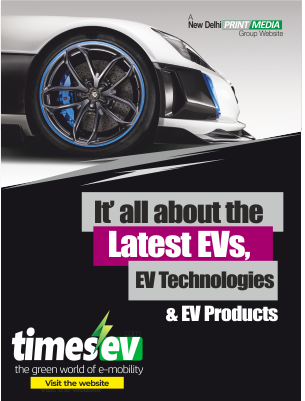Sushil Motwani, Founder of Aytexcel Pvt. Ltd, the Official India Representative of Formovie discusses trends shaping laser-powered UST projectors
The world of visual projection reached a major turning point during the 1980s with the introduction of laser projectors. Compared to the then-popular lamp-based projectors, they offered sharper images and longer lifespans, quickly catching the attention of those seeking superior picture quality. As technology advanced, the 1990s witnessed the arrival of digital projectors, further elevating visual experiences by delivering crisper and clearer images with remarkable ease of use.
Laser projectors continued to evolve, driven by the demand for better colour accuracy, energy efficiency, and longer-lasting performance, and by the early 2000s, the growing popularity of digital signage solidified their position in the market. Now, in the 2020s, especially after the COVID-19 outbreak, laser projectors are becoming a major part of daily life across various areas, finding widespread use in educational institutions, homes, and entertainment spaces, driven by the growing demand for digital classrooms and OTT platforms. Moreover, they have become more accessible and affordable.
The rising consumer spending on home entertainment devices is another growth driver for advanced laser projectors. According to a report by Market Research Future, the global home theatre industry is expected to expand from US$ 14.53 million in 2024 to US$ 61.1 million by 2032, registering a compound annual growth rate (CAGR) of 19.7 per cent during the forecast period. The report highlights that the Asia-Pacific region is expected to witness the fastest CAGR from 2024 to 2030, primarily driven by the expanding middle-class income group. Among the countries, China holds the largest market share, while India is emerging as the fastest-expanding market in the region.
Meanwhile, a Statista report projects that India’s home entertainment market will generate US$ 679.6 million in revenue by 2025. The demand is primarily for integrated devices with the latest technologies.
Technological advancement
This is where advanced laser-powered Ultra Short Throw (UST) projectors gain relevance, reshaping how consumers engage with content. These premium devices are designed with a strong focus on user convenience, addressing the demand for technologically advanced products that remain relevant over time, offer multiple connectivity options and avoid additional setups. Consumers prefer ‘all-in-one’ solutions, and manufacturers are aligning their designs accordingly.
For instance, Formovie’s latest projector, Theater Premium, features ALPD® RGB+ 4.0 triple-colour laser technology, engineered by Appotronics, delivering performance that surpasses standard RGB laser projectors. It offers true-to-life colours, enriching every scene with remarkable clarity and precision. The technology extends the device’s laser lifespan to up to 30,000 hours, ensuring consistent brightness without frequent replacements. Further, it maintains a 107 per cent BT.2020 wide colour gamut, eliminating the need for manual adjustments and delivering vibrant, lifelike visuals from the moment it is powered on.
Integrated technology
Talking about integrated features, the built-in Google TV offers access to over 700,000 movies and TV episodes across 10,000+ apps and enhances the streaming and live TV experience while helping consumers organise content effortlessly. Convenience is further amplified with the Google Assistant button on the remote, allowing users to access content through simple voice commands. Some projectors also feature a native Netflix app, enabling direct access to movies and web series without relying on additional devices. These projectors are also compatible with Network Attached Storage devices, Blu-ray players, U disks, and gaming consoles like Xbox, providing a comprehensive entertainment setup at home.
The demand for higher resolution is another factor driving the popularity of laser projectors in home entertainment. For most premium UST projectors, 4K UHD with a resolution of 3840 X 2160 pixels has already set the standard. While discussions around 8K projectors are ongoing, the transition is expected to be gradual due to the limited availability of native 8K content. However, some projectors now offer 8K upscaling, enhancing content quality with improved brightness, contrast, and colour accuracy. Although not true 8K, these projectors still deliver sharper and more detailed visuals.
Immersive sound
Compact design
Role in Education Sector
Sustainability and energy efficiency
To sum up, UST projectors continue to advance, with each updated version addressing the limitations of its predecessors. Their compact design and large screen size position them as a potential alternative to conventional flat-screen televisions. With affordability improving, these projectors are now shifting from specialised home theatre setups to any available space in modern-day homes.








